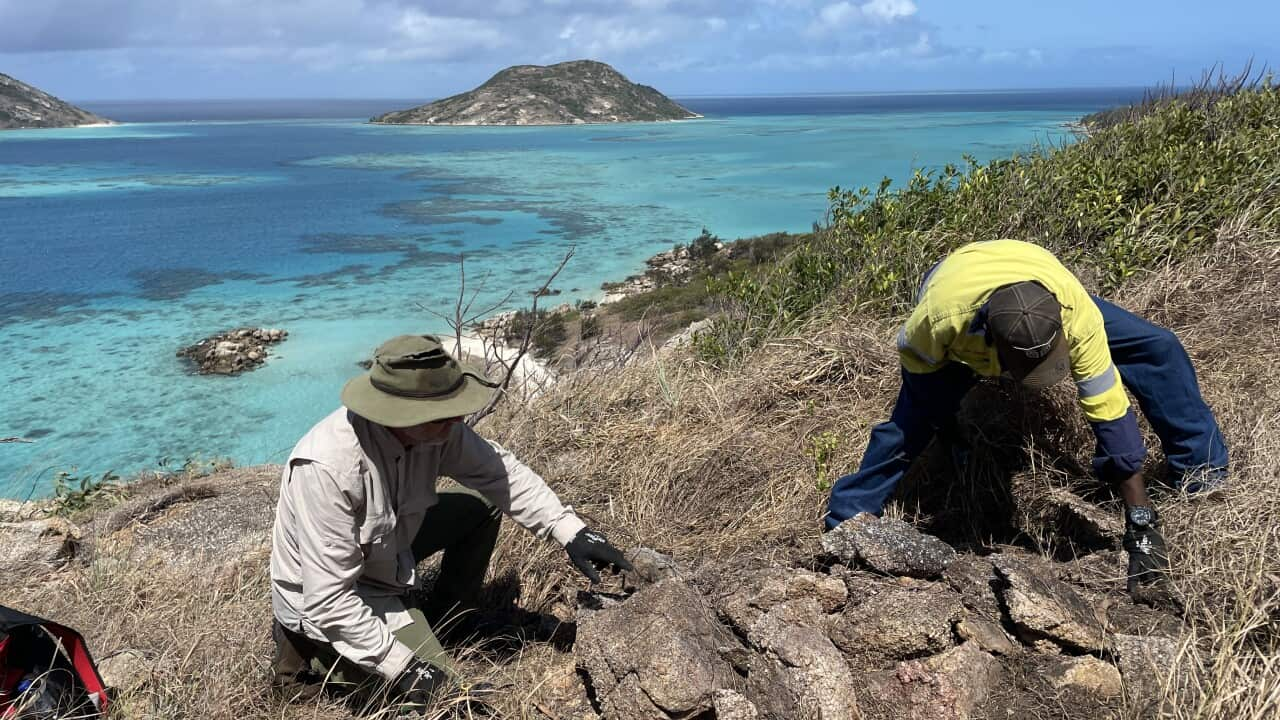The discovery of ancient ceramics on Jiigurru (Lizard Island Group) have confirmed sophiscated pottery-making techniques were used in the Great Barrier Reef thousands of years ago.
An archaeological dig by researchers from the Australian Research Council (ARC) and Dingaal and Ngurrumungu Traditional Owners unearthed the precious sherds (pottery fragments).
Dating techniques determined that not only were they locally made, but that they were between 2,000 and 3,000 years old, making them the oldest Aboriginal pottery ever discovered.
Dingaal clan member and Walmbaar Aboriginal Corporation Chairperson Kenneth McLean said it was an “exciting discovery” that gave a window into the old ways.
“We feel proud that our hunter gatherer ancestors were able to make pottery,” he told NITV.
“The colonialists came in and most of our stuff was destroyed. To discover some pieces of pottery that were locally made by our ancestors … that gives us a clear understanding of what was happening a few thousand years ago.”
Dingaal Traditional Owners Kenneth McLean (front), Raynard Baru and Jonathan Deeral. Source: Supplied
Jiigurru is highly significant for the Dingaal, deeply connected to their Songlines and a place of ceremony and initiations.
Mr McLean said he and other Traditional Owners educated researchers about the significance of sacred sites on the islands, and gave permission for their presence there.
“It was an opportunity for other people to discover ancient artefacts and what’s on Country,” he said.
Dispelling racist myths
Traditional Owners and researchers worked together on the archaeological dig on Jiigurru.
The findings of the research, conducted by the ARC’s Centre of Excellence for Australian Biodiversity and Heritage (CABAH), have been published in Quaternary Science Reviews.
Writing in the paper, the authors say the revelations are an important step in deconstructing myths perpetuated since colonisation.
“The apparent absence of pottery in Australia, as noted by early and more recent European observers, both reflected and was used to support racist social evolutionary hierarchies,” it reads.
“The findings challenge racist and colonialist stereotypes of Aboriginal communities as lacking complexity and innovation and contribute to [an] understanding of the deep knowledges and complex technologies of Indigenous [peoples].”
The research also has implications for the understanding of both seafaring technologies and maritime trade in the region.
The radiocarbon dating of the pottery shows an overlap in the period of its manufacture with the well-known ceramic traditions of the Lapita culture, from present-day Papua New Guinea.
It shows Jiigurru was the earliest occupied island in the northern Great Barirer Reef, and that the peoples who inhabited it “had sophisticated canoe voyaging technology and open-sea navigational skills”.
Professor Ian McNiven, a CABAH chief investigator and one of the paper’s authors, said the findings “open a new chapter” in Australian, Melanesian, and Pacific archaeology.
“The discovery adds a new layer to our understanding of Jiigurru and Indigenous [peoples’] role in the broader network of maritime exchange and cultural interaction across the Coral Sea.”
Mr McLean said he hopes the significant discovery inspires other such searches across the continent.
“We’re sharing something that’s never been told before, on how sacred the Country is, and how old our ancient ancestors are,” he said.
“There could be some archaeological digs on Country, working alongside Traditional Owners, and encourage a lot more of the other communities … to discover what was on Country,” he said.


